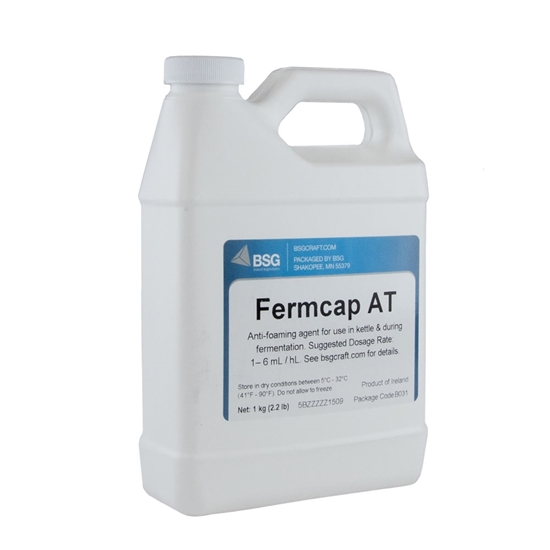Anti-Foam Control Solutions-- Eco-friendly Foam Control Technologies
Anti-Foam Control Solutions-- Eco-friendly Foam Control Technologies
Blog Article
Ideal Practices for Selecting the Right Anti-Foam Control Solution for Your Needs
Choosing an efficient anti-foam control solution demands an extensive examination of your distinct operational requirements. Secret considerations consist of the certain residential or commercial properties of your process, such as chemical, ph, and temperature interactions, all of which considerably affect the performance of defoaming agents.
Understand Your Foam Issue
Regularly, companies encounter foam-related concerns that can impede operational effectiveness and product high quality. Foam development can take place during numerous procedures, including blending, fermenting, and transportation, and it commonly brings about equipment inadequacies, production downtime, and raised functional costs. Comprehending the underlying reasons for foam generation is essential for dealing with the issue properly.
Foam can develop from several variables, such as the nature of the materials included, agitation degrees, temperature variations, and chain reactions. For example, certain surfactants can exacerbate lathering, while high shear mixing can introduce air, causing unwanted foam build-up. Furthermore, ecological problems and the certain characteristics of the liquid systems being used can dramatically influence foam behavior.
Identifying the kind of foam-- whether it is secure or unstable-- is also essential. Stable foam has a tendency to continue longer and is extra difficult to manage, while unsteady foam might dissipate much more easily. Anti-Foam Control Solutions. By assessing these variables, companies can gain understandings into their foam issues, enabling them to establish targeted techniques to alleviate foam development and improve overall process performance. This fundamental understanding is crucial for picking an ideal anti-foam control solution tailored to particular functional requirements.
Evaluate Anti-Foam Options
When considering anti-foam options, it is vital to completely assess the different formulations readily available on the marketplace to locate one of the most ideal solution for your particular foam-related obstacles. Anti-foam agents been available in varied kinds, including silicone-based, non-silicone, and natural solutions, each offering distinct residential or commercial properties and performance characteristics.
Begin by examining the details application needs, such as temperature level limits, pH degrees, and the sort of foam being produced. For example, silicone-based agents are known for their effectiveness in high-temperature atmospheres, while non-silicone options may be more suitable in food handling applications because of regulatory considerations.
It is also crucial to consider the rate of application and the desired longevity of the foam control. Some solutions may provide instant defoaming activity, while others supply long term stability. Performing small tests can supply insights right into the performance of each alternative in real-world conditions.
Think About Application Compatibility
In the realm of anti-foam remedies, making certain application compatibility is critical for accomplishing optimal efficiency. The effectiveness of an anti-foam representative largely depends upon its ability to operate sympathetically within the specific criteria of your application, including temperature, pH, and the existence of other chemicals. Different formulas may carry out variably throughout varied problems, hence thorough testing is crucial.
Begin by identifying the attributes of your process, such as viscosity and the nature of the tool in which the anti-foam will certainly be utilized. As an example, some anti-foam agents might work well in liquid remedies but fail in natural solvents. Furthermore, think about the prospective communications with existing products and ingredients to prevent unfavorable effects.
It is also crucial to assess the approach of application. Whether the anti-foam is introduced constantly or batch-wise can influence its efficacy and durability in the system. Ensure that the picked item is not only suitable with the functional specifications but likewise straightens with any kind of regulatory requirements pertinent to your market.
Assess Environmental Impact
Exactly how does the environmental effect of an anti-foam control remedy affect your general option procedure? The environmental impact of your selected anti-foam agent is extremely important, as it mirrors your dedication to sustainability and regulatory conformity. Choosing a product with marginal environmental repercussions can enhance your corporate photo and foster client depend on.
When examining ecological impact, think about the biodegradability of the anti-foam option. Solutions with high poisoning can position considerable dangers to regional ecological communities, possibly resulting in regulatory click here for info penalties and environmental deterioration.
One more vital variable is the visibility of unsafe materials. Anti-foams consisting of unsafe chemicals might require special delivery and disposal steps, raising functional costs and complicating compliance with ecological policies. For that reason, picking eco-friendly choices can mitigate these risks.
Screen and Enhance Efficiency
To maximize the effectiveness of your anti-foam control remedy, it is important to routinely check and optimize its performance. Constant analysis permits the identification of any type of discrepancies in foam degrees and the subsequent effectiveness of the anti-foam go representative.
Apply an organized technique to keep an eye on key performance indications (KPIs), such as foam volume, stability, and the feedback time of the anti-foam representative. Make use of analytical tools and strategies, such as aesthetic inspections, foam height dimensions, and specialized sensing units, to gather precise information.

Additionally, keep open interaction with distributors for technological assistance and understandings on the newest advancements in anti-foam innovation. This positive approach not just help in achieving ideal performance but likewise decreases functional disruptions and improves general process effectiveness. Regularly revisiting and refining your anti-foam technique guarantees that you are properly handling foam-related obstacles, eventually leading to enhanced efficiency and expense savings.

Verdict
To conclude, picking the proper anti-foam control option demands an extensive assessment of specific application demands, including temperature level, pH degrees, and chemical compatibility. Extensive screening for instant and prolonged defoaming efficiency is essential, as is consideration of environmental impacts and regulatory conformity. By prioritizing Home Page environment-friendly alternatives and continuously keeping track of performance, operational effectiveness can be boosted while effectively alleviating foam-related obstacles. Abiding by these ideal techniques will facilitate informed decision-making in anti-foam control options.
Picking a reliable anti-foam control service necessitates a comprehensive evaluation of your unique operational requirements.In the realm of anti-foam services, guaranteeing application compatibility is paramount for attaining ideal performance.Just how does the environmental impact of an anti-foam control solution influence your total option procedure?In final thought, choosing the suitable anti-foam control solution demands a thorough analysis of certain application requirements, consisting of temperature, pH degrees, and chemical compatibility (Anti-Foam Control Solutions). Sticking to these finest techniques will promote educated decision-making in anti-foam control remedies
Report this page